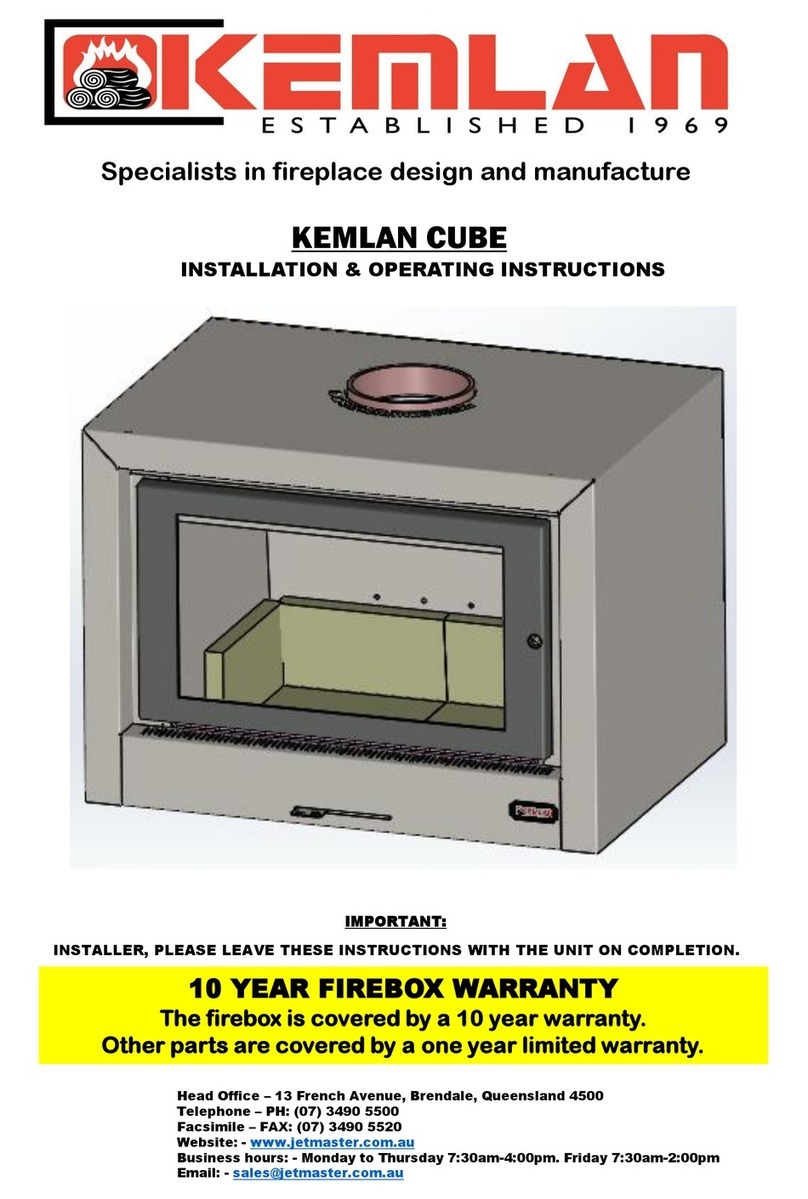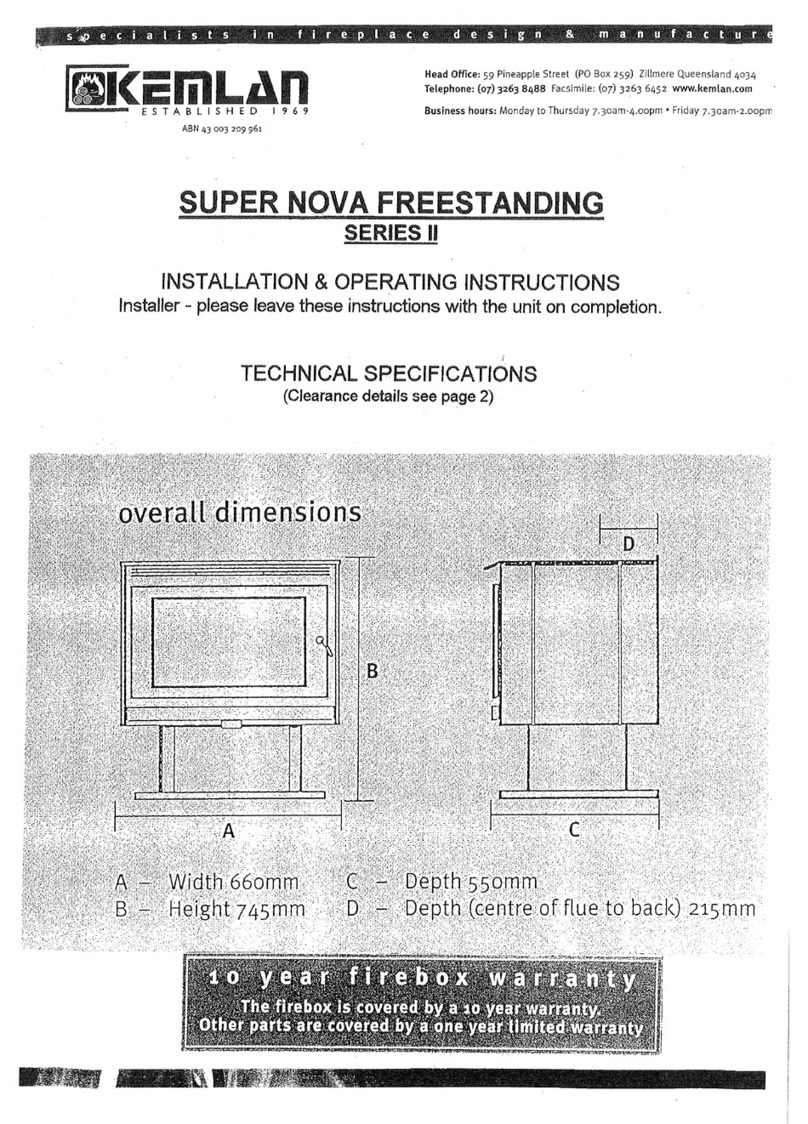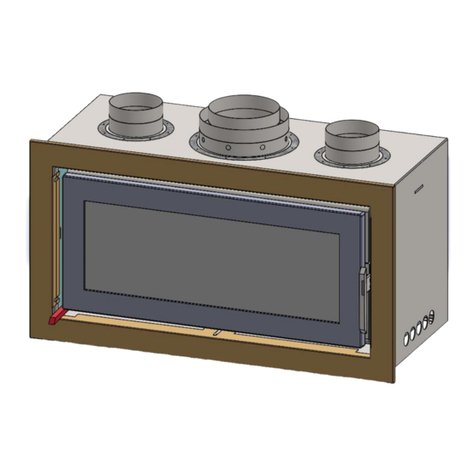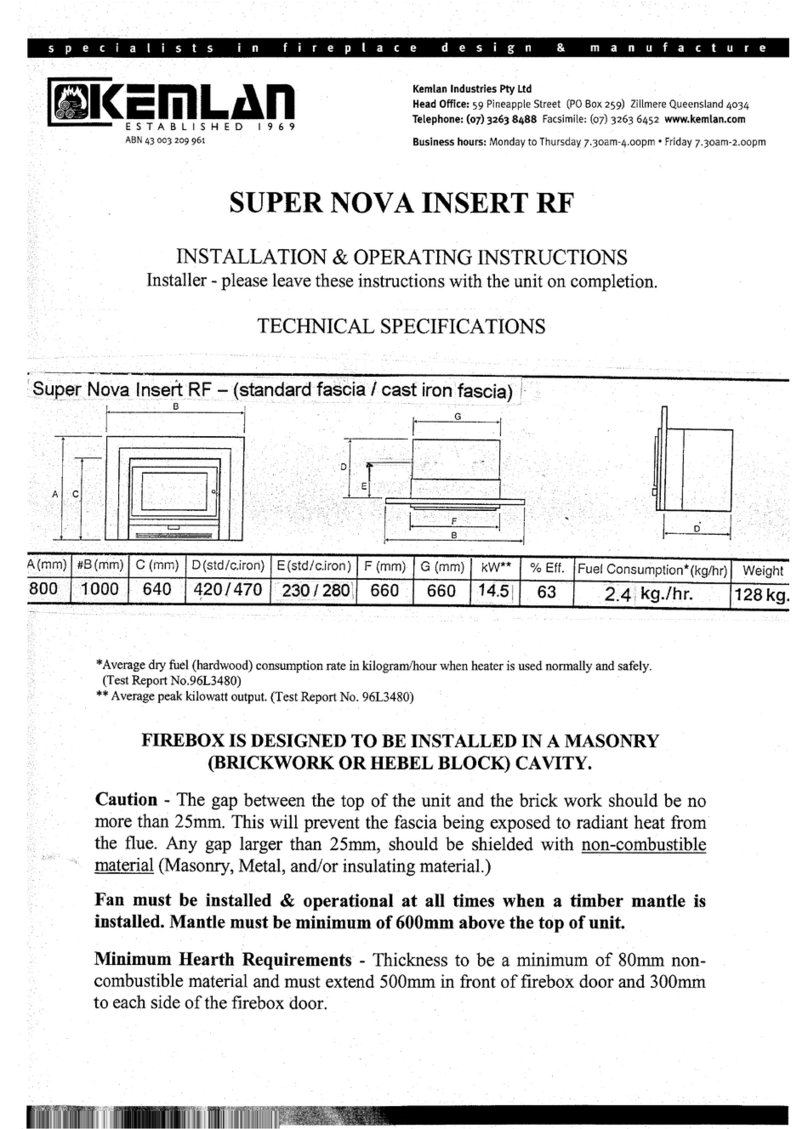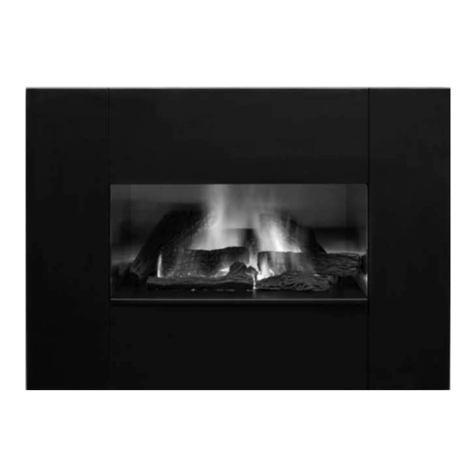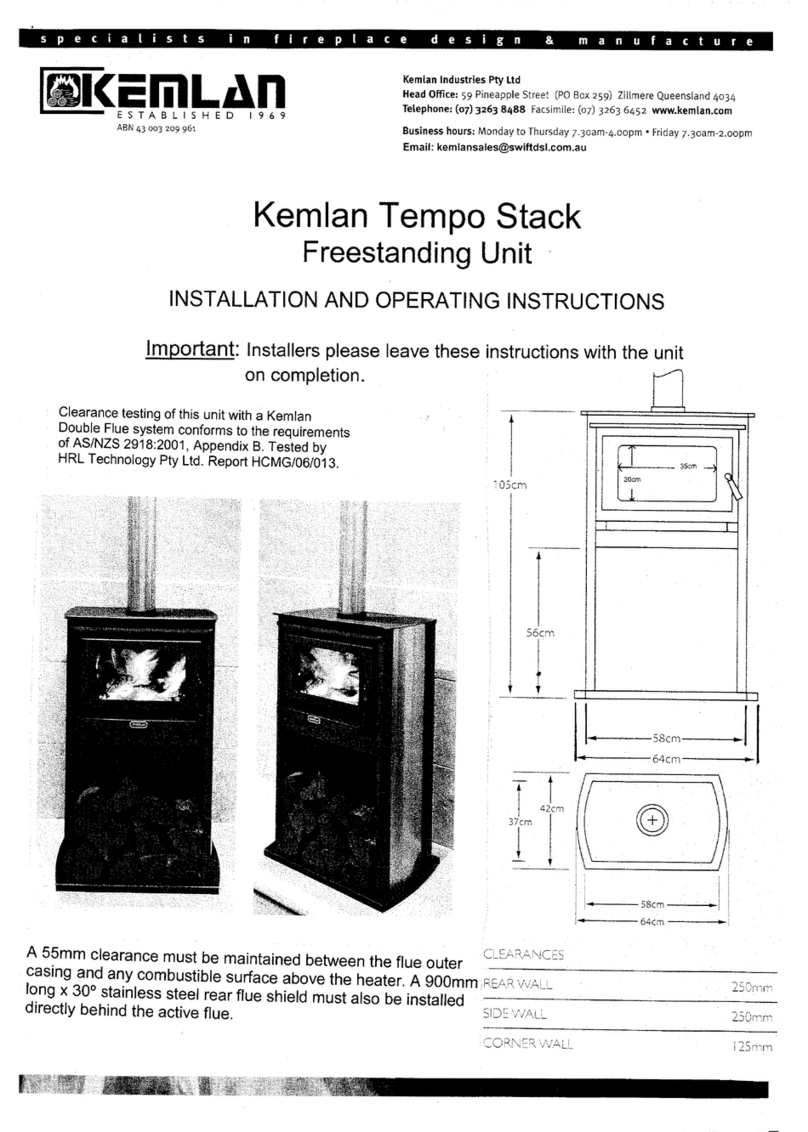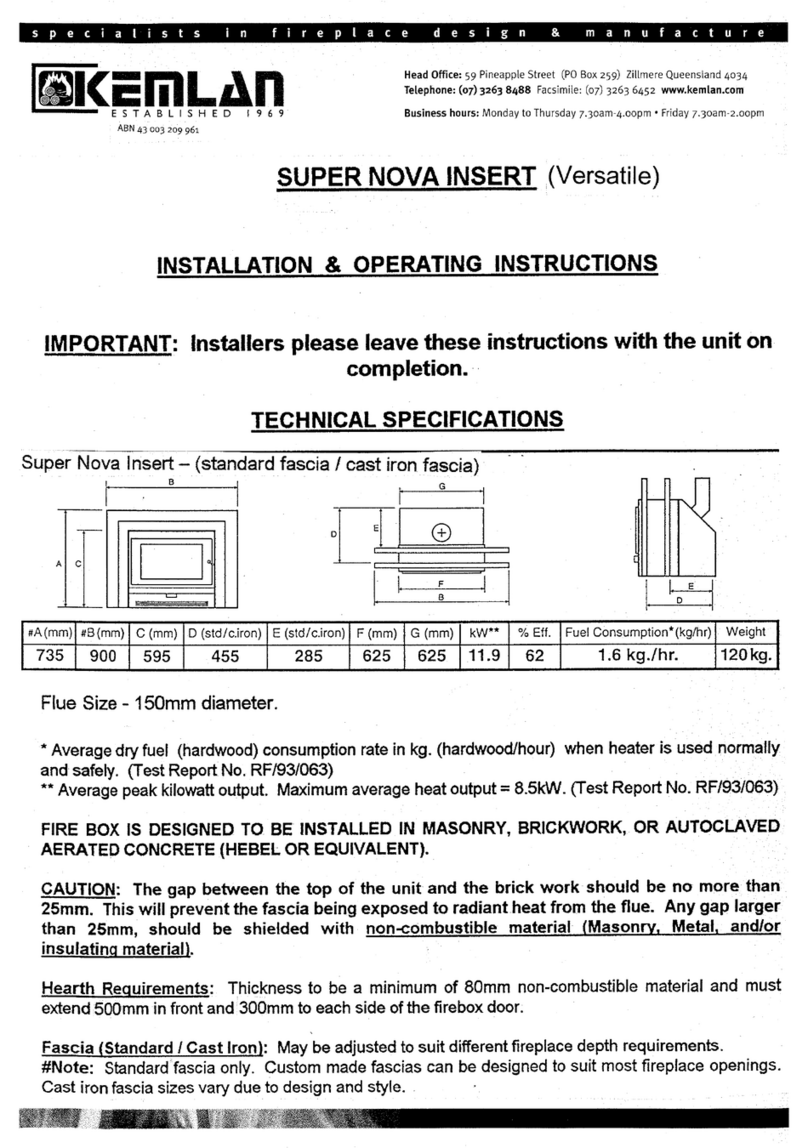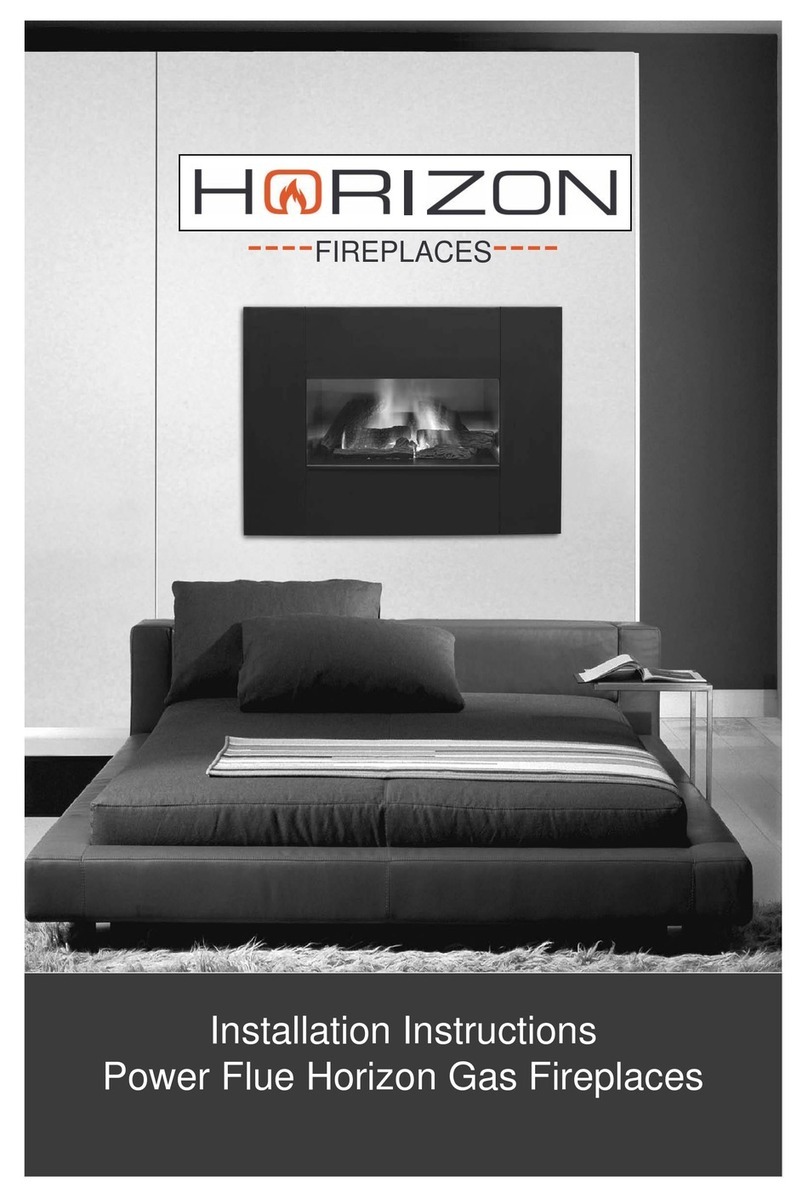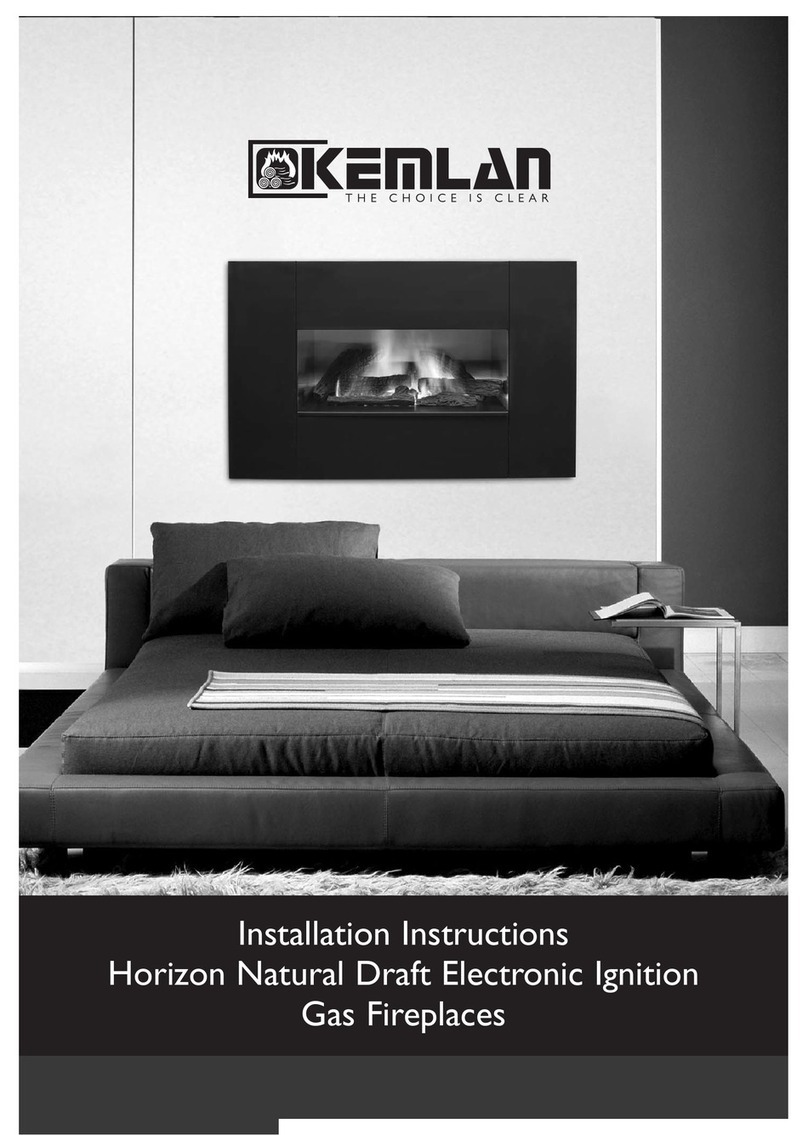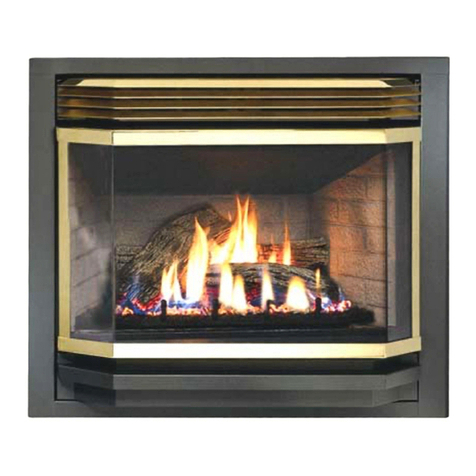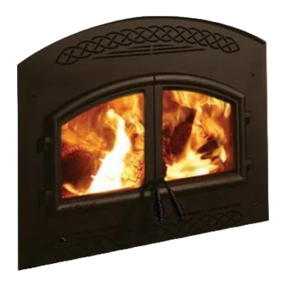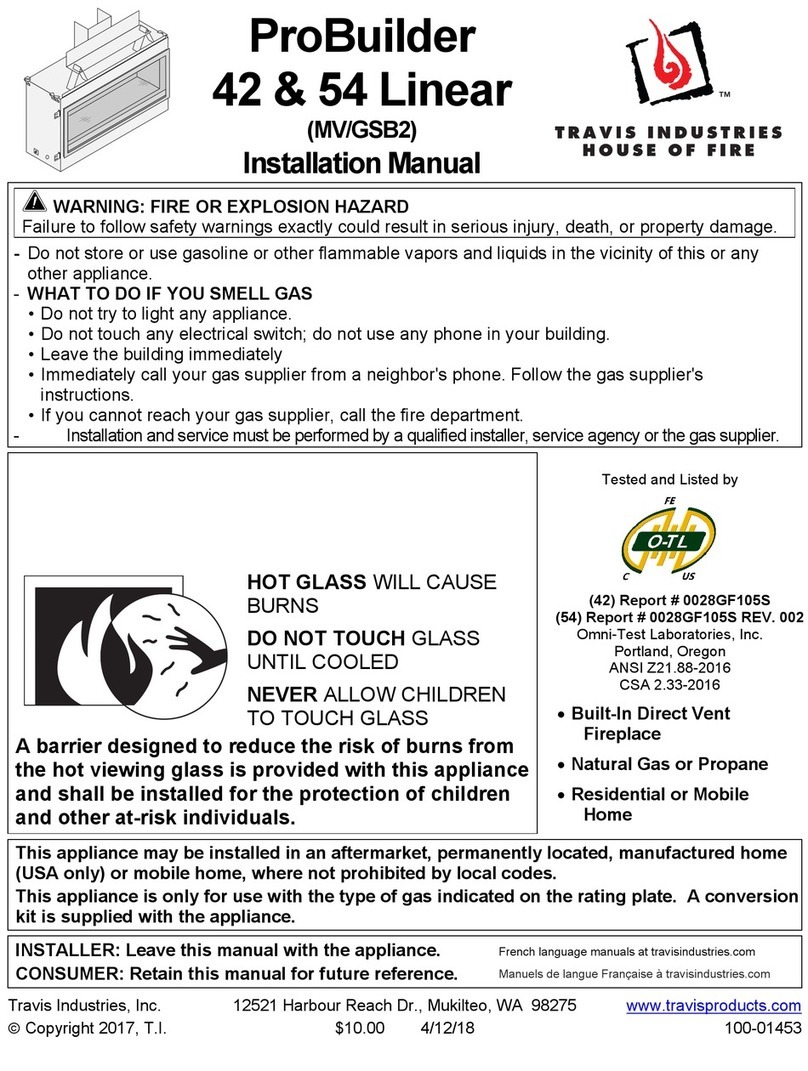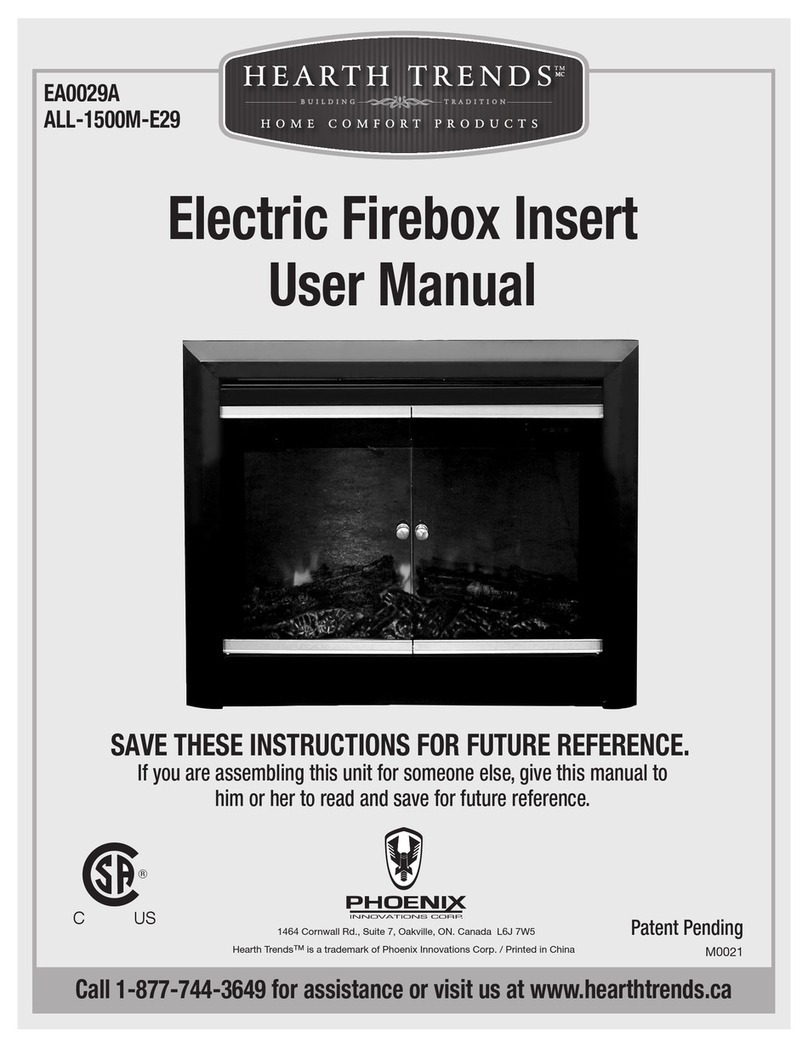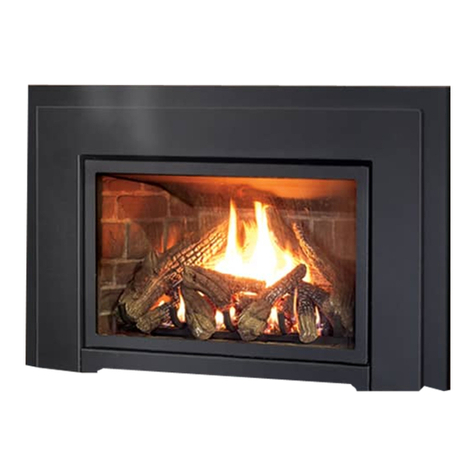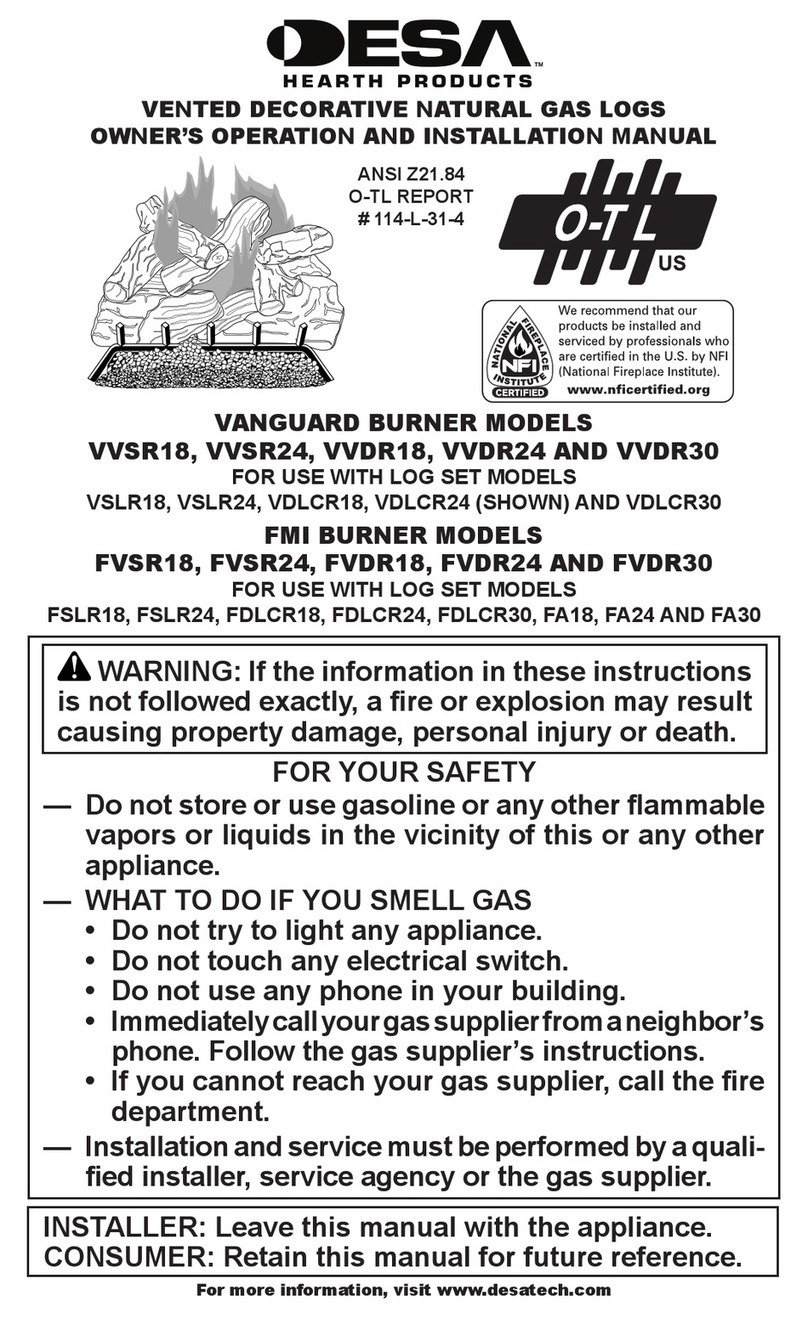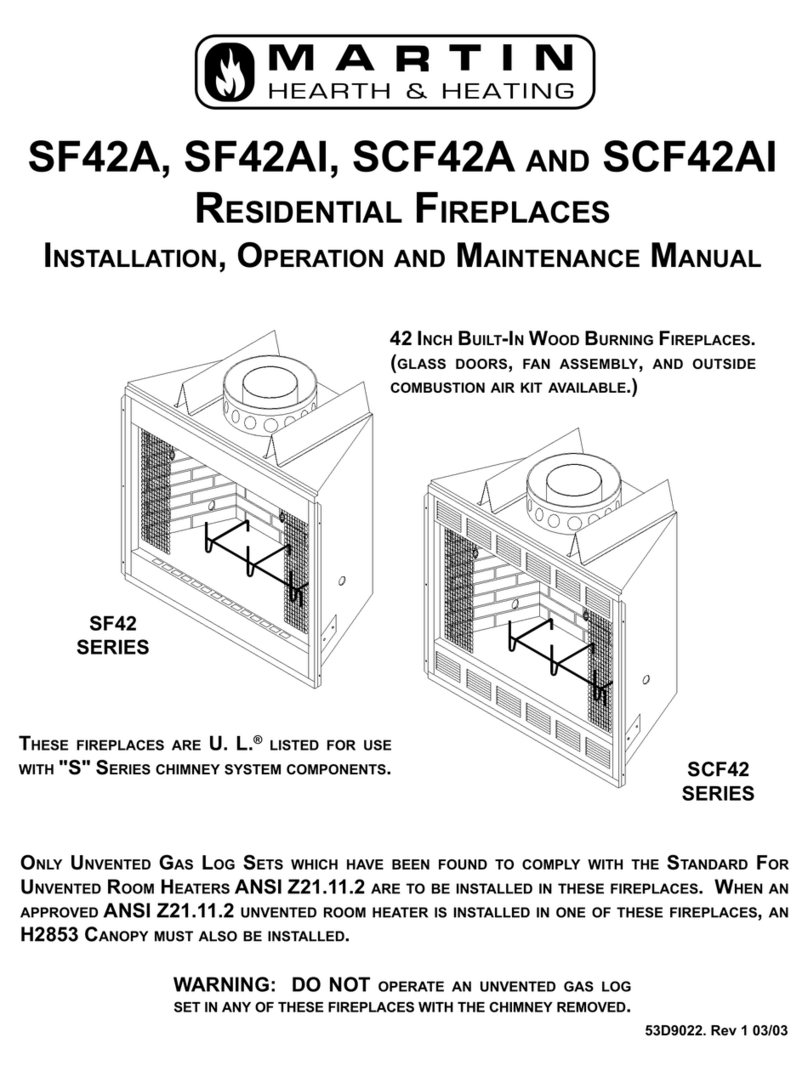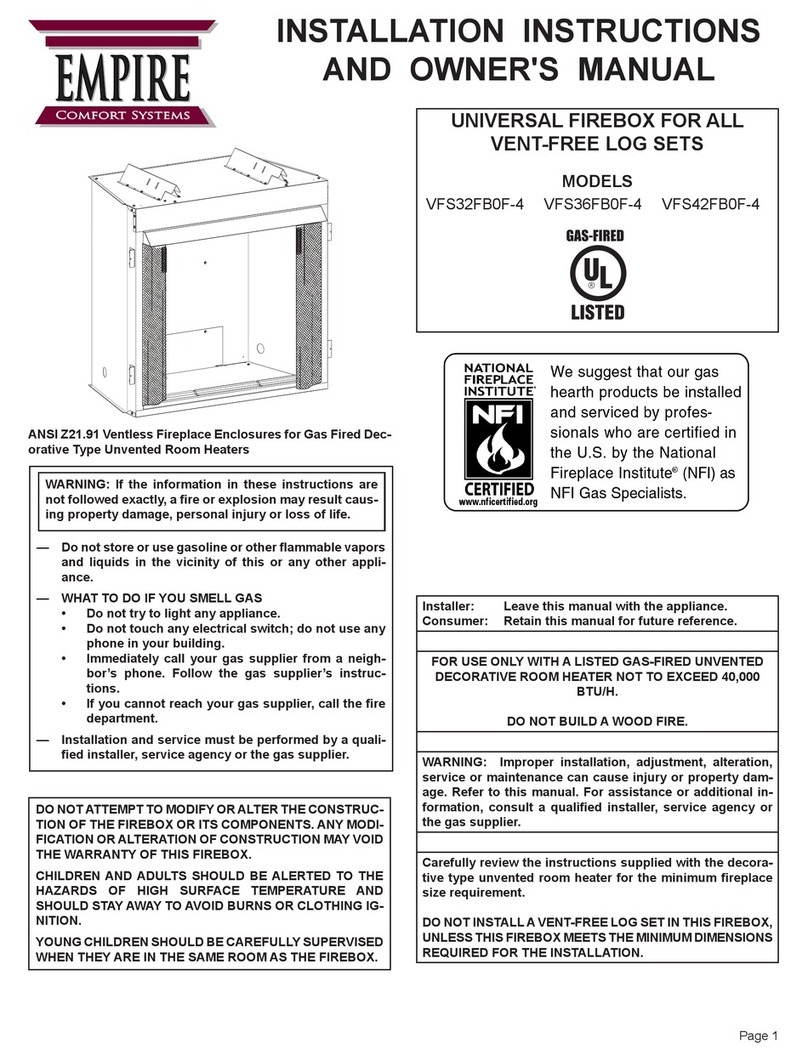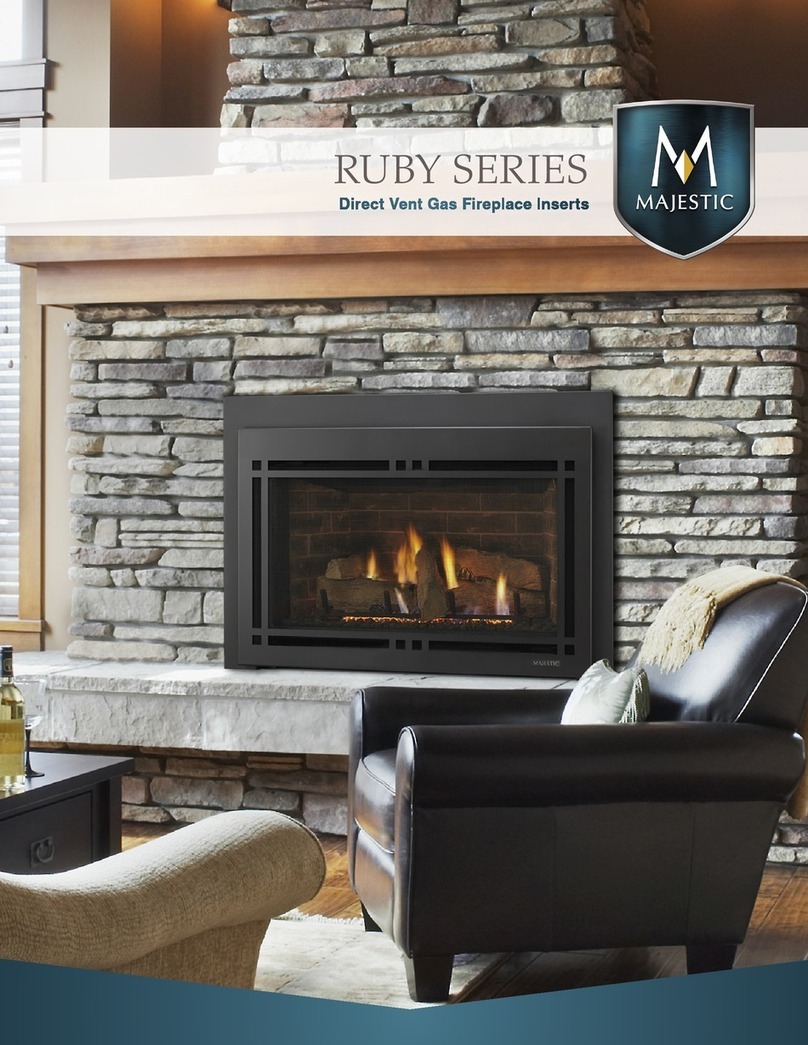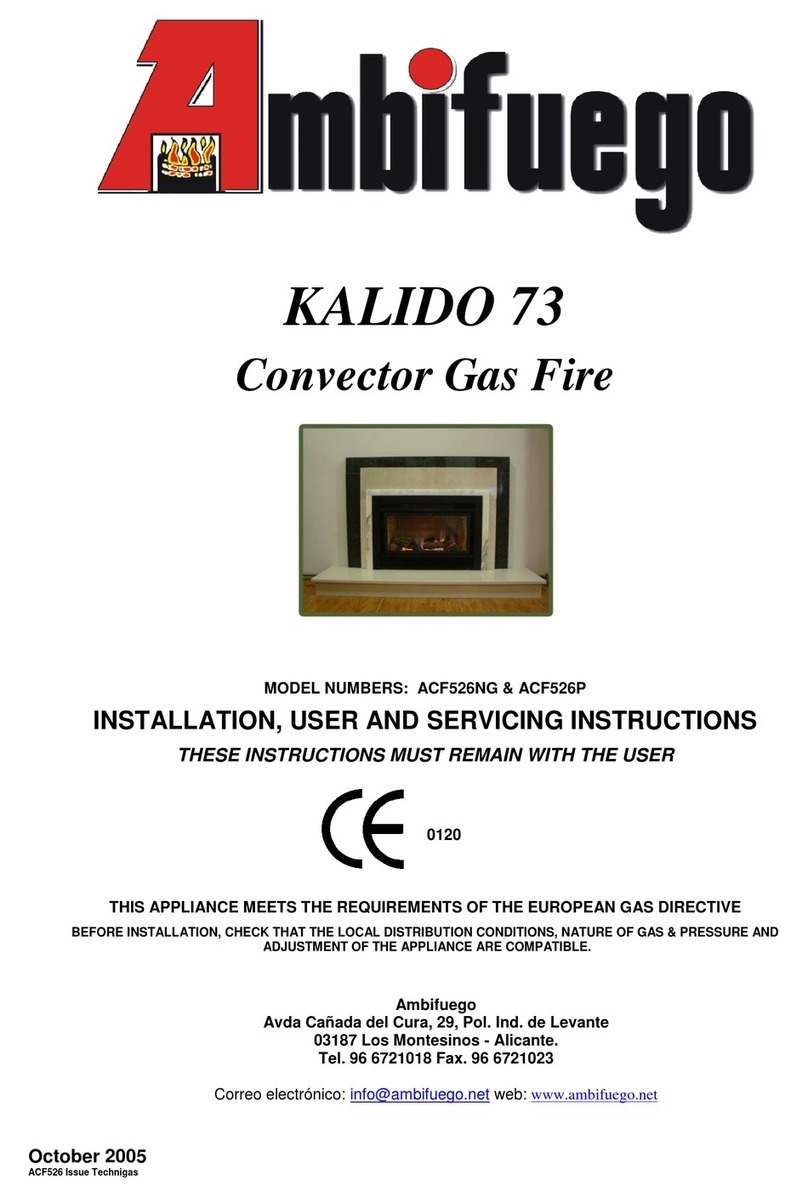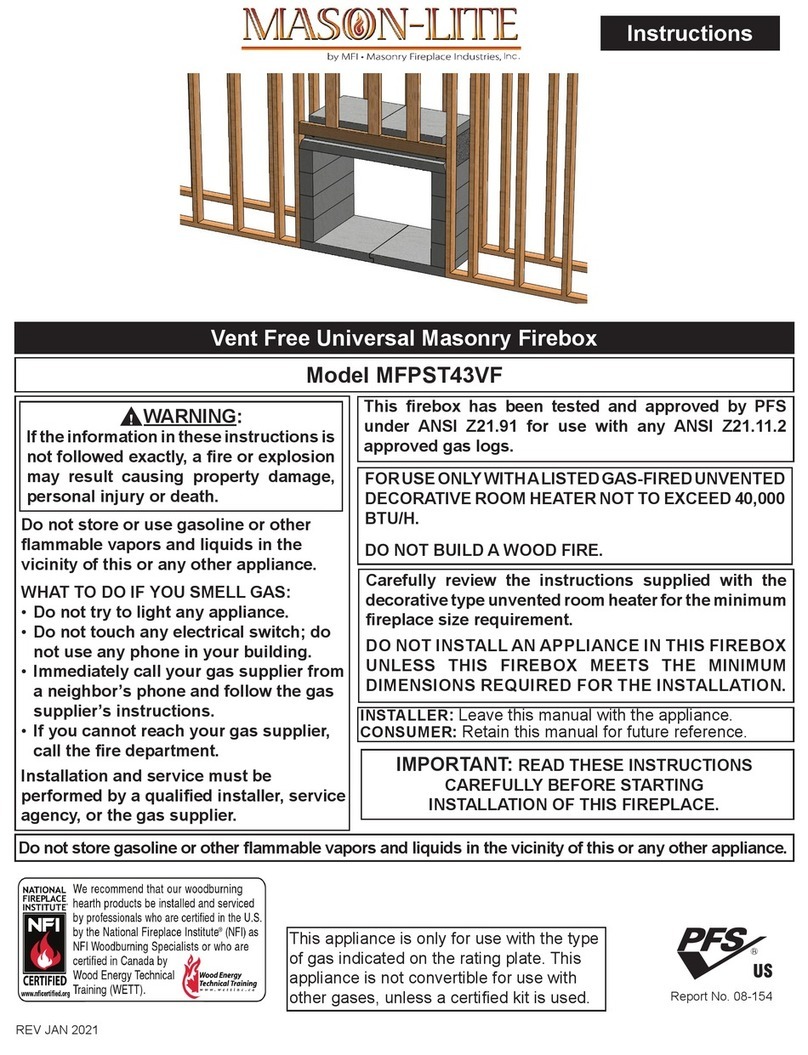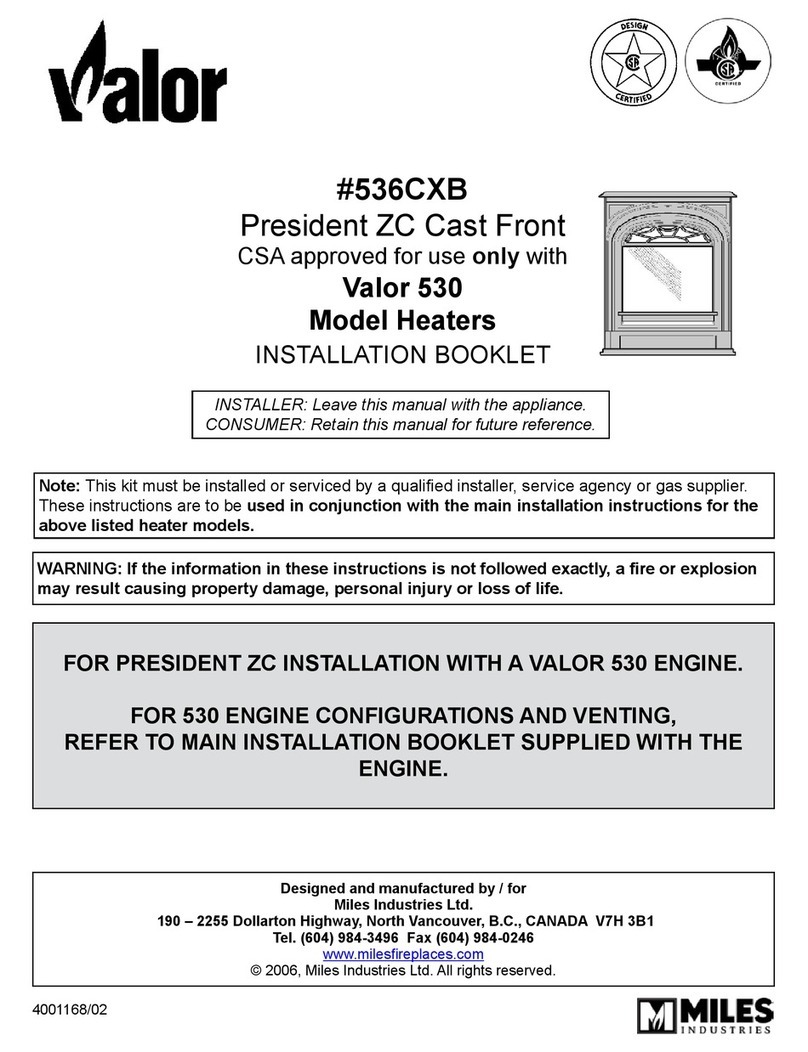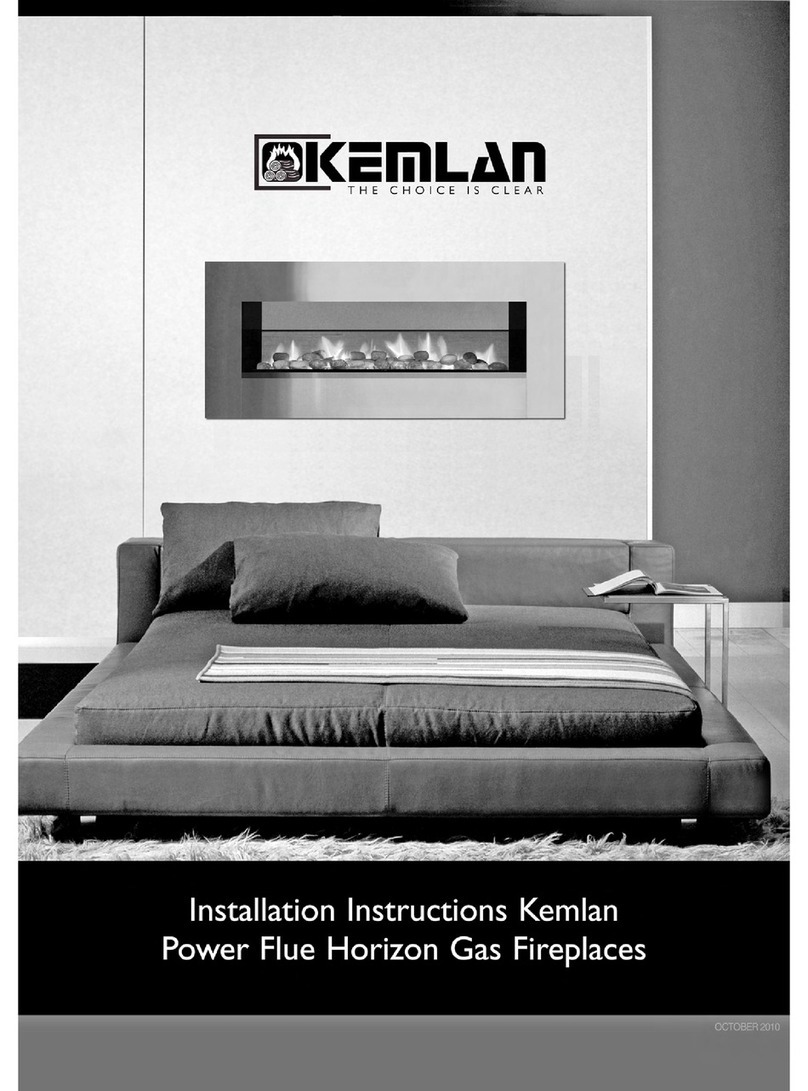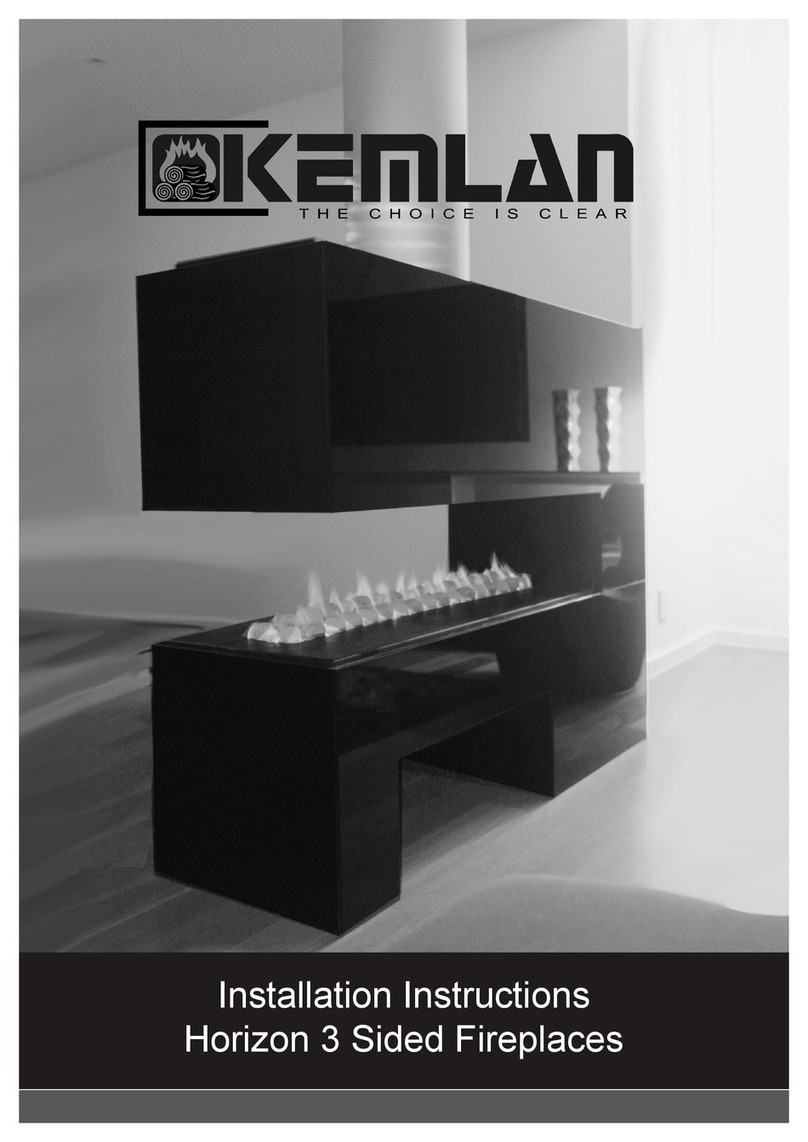9
To get the best from your Kemlan heater it is essential that you use good rewood, and use it correctly May people do not understand the principle of
using a wood burning appliance and we suggest that it will be worth your while to study the following extract from a well known American publication.
PRINCIPLES OF COMBUSTION: HOW WOOD BURNS
Technically, wood does not burn. What burns is the volatiles and charcoal that are created. That is why wood will not catch on re immediately when
you put a match to it; it has to rst undergo the chemical changes that create the volatiles, and a match does not create enough heat to activate the
process. As kindling and paper evaporate the moisture in the wood, the wood absorbs heat. At a certain point, gases are given off and when these
volatiles reach 480 degrees F, or the “Flash point”, as it is called, they will burst into ame if sufcient oxygen is present. The volatiles give off more heat
than does charcoal, which is why a re with ames (which burn the volatiles) produces more heat than one that is all charcoal.
Since the volatiles are gases and since heat rises, taking the gases with it, it is very easy to create a situation in which most of the volatiles go up the
chimney almost as soon as they are produced. This is what happens with a roaring re and, to a lesser extent, with an open re. One of the reasons
(but only one) that a freestanding wood stove produces more heat than an open re is that the volatiles are contained within the rebox and are not so
quickly dissipated up the chimney. A stove that is bafed is merely one that has interior construction design to keep the volatiles in the rebox longer;
the longer they are in the rebox, the more completely they burn. The more completely they burn, the more heat is produced. It’s that simple.
Since the ames burn the volatiles and produce heat, the ideal situation is the longest possible ame path. As soon as wood burners understand this,
they tried to devise ways of making the ame path longer than in an ordinary open re. Even though the role of oxygen in combustion was not under-
stood in Ben Franklin’s time, Franklin did realise the importance of more completely burned volatiles. His solution was to try to invent a downdraft stove
– one that sent the volatiles back down through the re – but he never succeeded in getting it to work. A downdraft goes against the nature of volatiles,
which is to rise. In more recent times, there have been some successful downdraft – or partial downdraft – stoves created and some of the replace
stoves and units utilise this principle. Ideally, it would be best if the volatiles could be redirected down through the re several times, until they were al-
most totally consumed. This would not only make the maximum use of the heat potential of the wood; it would reduce creosote build-up to almost zero.
Perhaps someday an ingenious inventor will design a unit that does this; so far no has been able to.
MOISTURE AND COMBUSTION
As we have seen, dry wood ignites faster and burns better – with higher heat production – than wet or green wood. The difference between the amount
of heat produced by dry wood and green wood is so great that a dry softwood of good grade will produce more heat than green hardwood. Green white
ash, for instance, is not as good a fuel as dry tamarack.
The reason for the superiority of dry wood is easy to understand. Heat cannot be produced until moisture has been driven off. Since even so-called
seasoned dry wood contains approximately 20 percent moisture, it takes time for any re to begin producing useable heat. Wet wood, which can have
a moisture content of over 100 percent (due to the way moisture is measured), will take that much longer to produce heat. Meanwhile, the re will
produce smoke and creosote and very little heat. This was brought sharply to my attention when I installed my rst wood heater. To my surprise and
delight, I found it comfortably heated eight rooms, where I had expected to heat only two or three. After some time, when I had someone helping me run
the re, I suddenly noticed that the house was chilly. We added more wood and adjusted the draft controls, but nothing we did seemed to help. It nally
occurred to me to check the woodpile. My friend had been getting green wood from a stack that was drying, instead of from the dry-wood stack. The
difference the green wood made was so dramatic I will never forget it.
HOW TO TEST WOOD FOR DRYNESS
There are two easy ways for even a novice to spot dry wood. Dry wood tends to “check”. Look at the log ends and you will see cracks radiating from
the centre of the log. If the logs have been split, the cracks will be harder to nd because wood tends to split along the cracks.
Another test for dry wood is the sound it makes when two logs are banged against each other. Green wood will make sort of a dull thud; dry wood
makes a nice crisp, sharp sound. Once you have heard the two, you will remember the difference.
FROM THE ABOVE EXTRACT SEVERAL FACTS BECOME APPARENT:
1. It is vital that your rewood be dry and seasoned.
2. A good hot re of kindling and smaller pieces of fuel must be established before adding larger logs.
3. The larger logs should be well alight before slowing down the combustion by adjusting the air intake.
4. A hot bed of coals needs to be maintained to ensure continued combustion in the rebox.
5. When new timber is added to the rebox the air control should be opened until the fuel is well alight before damping it down again. This will take
from 10 to 20 minutes.
6. When setting the controls for overnight burn you will need to experiment with the settings to suit your particular type of fuel. Very dense hardwood
requires more air to combust and over damping will result in charring and smoking causing the glass in the door to become dirty. The same will
apply with fuel which is not fully seasoned or is not dry enough. Kemlan have followed a policy since 1969 of checking on all complaints about
poor performance of their heaters and apart from a few instances of incorrect installation (mostly insufcient ue length) all problems have been
directly related to incorrect operation and/or poor fuel. We know you will experience many years of satisfaction from your heater if you follow the
above advice.
OPERATING HINTS










